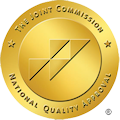October is National Substance Abuse Prevention Month, a time dedicated to raising awareness about the importance of preventing substance use disorders. This month serves as a reminder of the devastating impact addiction can have on individuals, families, and communities, while also emphasizing the power of education, support, and early intervention.
By promoting healthy choices, sharing resources, and fostering open dialogue, we can work together to prevent substance abuse and support those on the path to recovery. National Substance Abuse Prevention Month is a crucial opportunity to highlight the role we all play in building a healthier, addiction-free future.
If you or a loved one is struggling with substance abuse, our addiction treatment programs in California can help. Don’t wait to seek professional support.
What is National Substance Abuse Prevention Month?
National Substance Abuse Prevention Month, observed each October, is a national campaign focused on raising awareness about the dangers of substance abuse and the importance of prevention efforts. Established to bring attention to the impact of substance use on individuals, families, and communities, it aims to promote healthier lifestyles and encourage early intervention strategies.
Throughout the month, communities, organizations, and individuals come together to educate people about the risks associated with drug and alcohol use, particularly among youth. Prevention programs, public events, and campaigns are held to provide resources, support, and information that can help reduce substance abuse and its consequences.
By focusing on prevention, National Substance Abuse Prevention Month emphasizes the importance of addressing substance use early on, promoting mental health and wellness, and encouraging people to seek substance abuse treatment when needed. It is a time to reflect on the need for stronger community involvement and comprehensive strategies to build a safer, addiction-free future.

What Is The Importance Of National Substance Abuse Prevention Month?
The importance of National Substance Abuse Prevention Month lies in its ability to focus attention on the critical issue of substance abuse, raise awareness, and encourage proactive steps to prevent addiction. Here are several key reasons why this month is vital:
- Promoting Awareness: It raises public understanding of the risks and long-term consequences of substance abuse, including physical, mental, and emotional health issues.
- Preventing Addiction: By emphasizing education, early intervention, and prevention programs, it helps reduce the likelihood of individuals developing substance use disorders, especially among youth.
- Supporting Families and Communities: Substance abuse impacts not only individuals but also families and entire communities. National Substance Abuse Prevention Month highlights the need for collective responsibility and offers resources and strategies to help loved ones affected by addiction.
- Encouraging Recovery: Prevention efforts often go hand-in-hand with promoting recovery. This month serves as a platform for sharing stories of resilience, recovery, and hope, encouraging those struggling with addiction to seek medical detox in Orange County, CA.
- Reducing Stigma: It helps to combat the stigma associated with substance abuse by fostering open conversations and promoting an understanding that addiction is a disease, not a moral failing.
- Strengthening Prevention Networks: Organizations, schools, and communities can use this month to enhance their prevention efforts, launching campaigns and programs that provide crucial education and resources on substance abuse prevention.
What is Red Ribbon Week?
Red Ribbon Week is the largest drug prevention awareness campaign in the United States, held annually from October 23 to October 31. It encourages communities, schools, and organizations to promote drug-free lifestyles, particularly among young people.
The event honors the memory of DEA agent Enrique “Kiki” Camarena, who was killed in 1985 by drug traffickers while investigating drug-related crimes in Mexico. His death became a catalyst for raising awareness about the dangers of drug use and the importance of prevention.
During Red Ribbon Week, people across the country wear red ribbons as a symbol of their commitment to living drug-free and making healthier choices. Schools often participate by organizing events, activities, and educational programs that teach students about the dangers of drugs, alcohol, and tobacco. Themes vary each year, with the goal of empowering youth to resist peer pressure and make positive, drug-free choices.
Red Ribbon Week plays a crucial role in spreading the message of prevention, encouraging conversations about drug use, and fostering a sense of responsibility among youth, parents, and community leaders. It also provides an opportunity to celebrate healthy living and show support for those affected by substance abuse. Through education, awareness, and a focus on substance abuse resources, Red Ribbon Week aims to reduce substance use and create safer, healthier communities.
What Are Ways To Prevent Substance Abuse?
Preventing substance abuse involves a combination of education, early intervention, and fostering environments that promote healthy choices. Here are several effective strategies to prevent substance abuse:
- Teach about the risks: Inform individuals, especially young people, about the dangers of drugs, alcohol, and tobacco use. Understanding the consequences can deter them from experimenting.
- School-based prevention programs: Programs that focus on building life skills, teaching decision-making, and offering drug education have been shown to reduce substance use.
- Open communication: Encourage open discussions between parents and children about drug use, peer pressure, and the importance of healthy habits. Children who feel comfortable talking to their parents are more likely to make positive choices.
- Set clear expectations: Parents and guardians should set firm boundaries regarding drug and alcohol use, making sure their expectations are well understood.
- Be a role model: Parents and caregivers who demonstrate healthy behaviors and avoid substance abuse set a positive example for their children.
- Strengthen community programs: Communities can implement after-school programs, sports activities, and mentoring initiatives that provide young people with healthy, drug-free environments.
- Promote public awareness campaigns: Local governments, health organizations, and non-profits can lead campaigns that promote the risks of substance abuse and encourage healthy lifestyles.
- Collaborate with schools and law enforcement: Community-wide partnerships between schools, law enforcement, and social services help identify at-risk individuals and provide necessary support.
- Encourage healthy friendships: Surrounding oneself with friends who make positive decisions can reduce the likelihood of engaging in risky behaviors like substance use.
- Peer mentoring programs: Schools and communities can organize peer leadership programs where older students or peers mentor younger students about making healthy choices.
- Address underlying issues: Many people turn to substance use to cope with stress, anxiety, trauma, or other mental health challenges. Promoting mental health and addiction resources such as our addiction and anxiety treatment can help individuals avoid self-medicating with drugs or alcohol.
- Teach coping skills: Helping individuals develop healthy coping mechanisms for stress and emotional challenges can reduce the likelihood of substance use as a way to manage difficult feelings.
- Regulate access to alcohol and tobacco: Enforcing laws that restrict access to alcohol, tobacco, and drugs for minors helps reduce substance use among teens.
- Monitor medications: Parents and caregivers should monitor and properly dispose of prescription medications to prevent misuse or experimentation.
- Identify at-risk individuals: Schools, healthcare providers, and community organizations should screen for risk factors such as family history of substance abuse, trauma, or mental health issues.
- Provide support early: Early intervention, such as counseling or education for at-risk individuals, can prevent substance abuse before it starts or escalates.
By combining these strategies, individuals, families, and communities can work together to reduce the risk of substance abuse and promote healthier, more fulfilling lives.
What Substance Abuse Treatment Programs Do We Offer?

At California Addiction Treatment, we offer comprehensive and personalized substance abuse treatment programs designed to address:
- Alcohol Addiction
- Cocaine Addiction
- Heroin Addiction
- Meth Addiction
- Opioid Addiction
- Prescription Drug Addiction
Our approach combines evidence-based therapies and holistic support to help individuals achieve lasting recovery. Here’s an overview of the treatment programs we provide:
Our medical detox program provides a safe and supervised environment for individuals undergoing withdrawal from substances. Under the care of experienced medical professionals, we manage withdrawal symptoms and ensure a comfortable detox process. Detox is often the first step in recovery, setting the stage for further treatment.
For individuals struggling with both substance use disorders and mental health conditions, our dual diagnosis program offers integrated care. We address co-occurring disorders, such as depression, anxiety, PTSD, and other mental health issues, alongside addiction treatment. This comprehensive approach is critical for long-term recovery, as untreated mental health conditions often contribute to relapse.
Our residential treatment program provides 24/7 support in a structured, drug-free environment. Clients live on-site and receive intensive therapy, including individual therapy, group therapy, and holistic activities. This immersive approach allows individuals to focus solely on their recovery without the distractions or triggers of daily life.
We offer medication-assisted treatment (MAT) to support individuals struggling with opioid addiction or alcohol addiction. MAT combines FDA-approved medications with counseling and behavioral therapies to help manage cravings and withdrawal symptoms, making the recovery process more manageable and reducing the risk of relapse.
At California Addiction Treatment, we are committed to providing compassionate, individualized care to help individuals overcome addiction and reclaim their lives. Each of our programs is tailored to meet the specific needs of our clients, offering the tools and support necessary for a successful recovery journey.
California Addiction Treatment supports National Substance Abuse Prevention Month
California Addiction Treatment proudly supports National Substance Abuse Prevention Month, held every October, as part of our commitment to raising awareness about addiction and the importance of prevention. This annual observance aligns with our mission to educate communities, provide resources, and promote healthier, drug-free lives.
Through our comprehensive treatment programs—ranging from medical detox to dual diagnosis and medication-assisted treatment (MAT)—we emphasize the importance of early intervention and long-term recovery. During National Substance Abuse Prevention Month, we actively participate in community events, share prevention strategies, and encourage open conversations about the risks of substance use and the value of support systems.
By supporting this national initiative, California Addiction Treatment aims to highlight the critical role that prevention and education play in breaking the cycle of addiction and helping individuals achieve lasting recovery. Contact us today to learn how we build stronger, healthier communities free from the grips of substance abuse.





